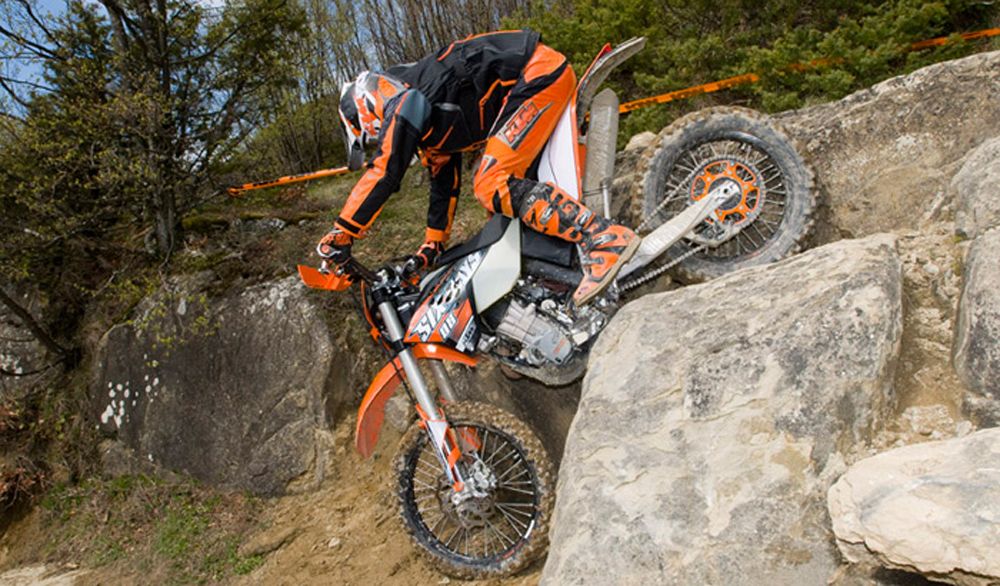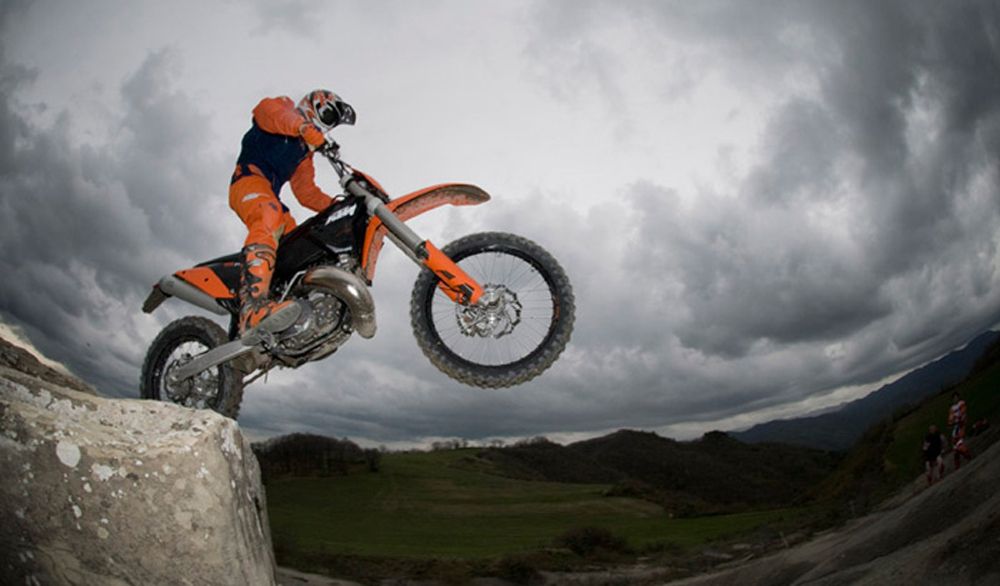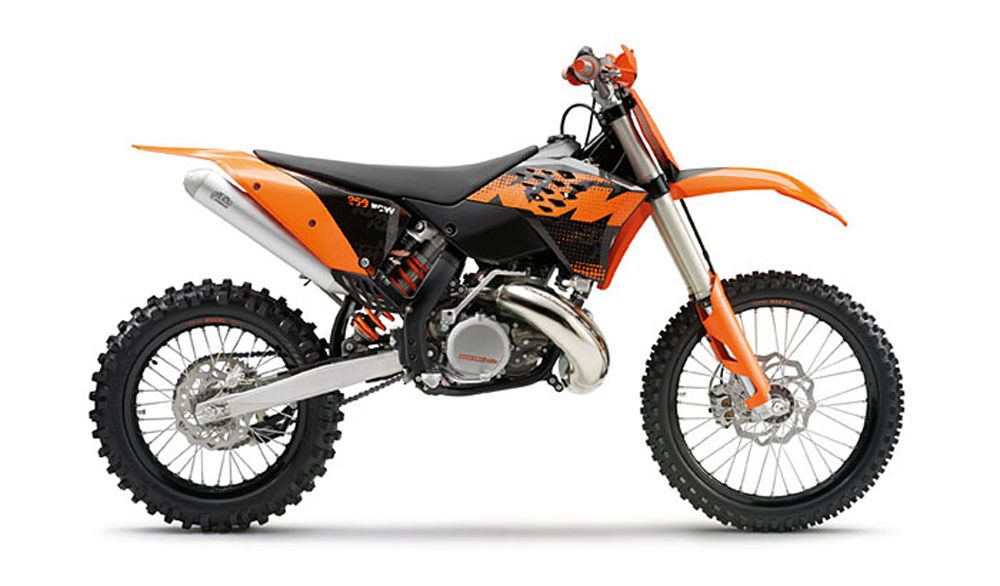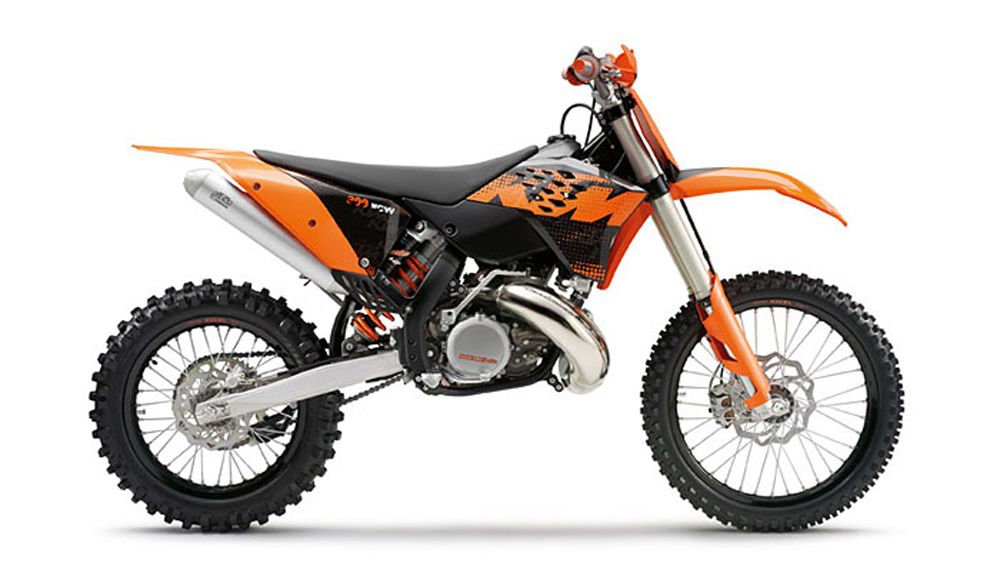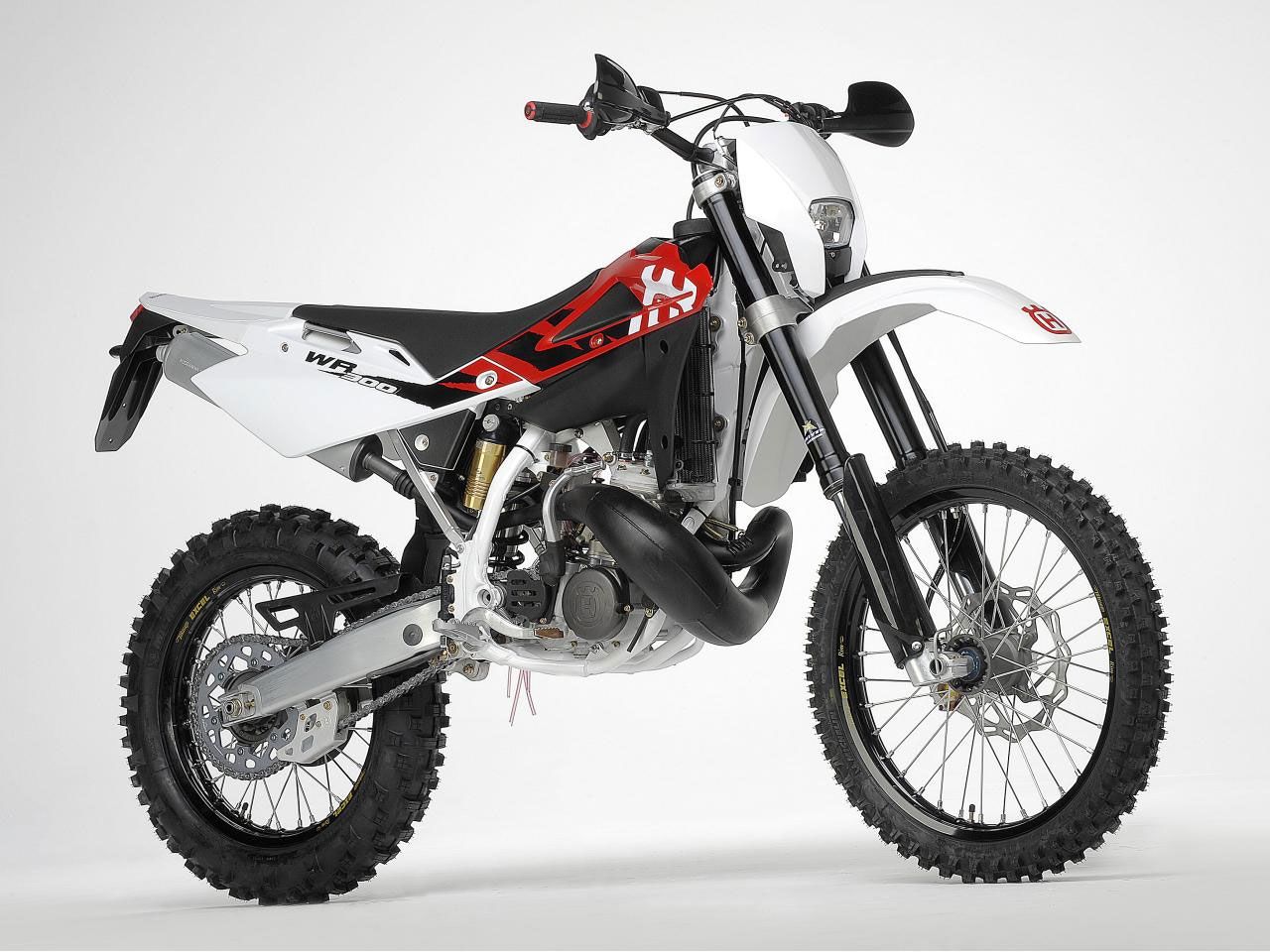KTM has a two-stroke enduro alternative for each of their four-stroke model, so while the 250 XC-W is comparable to their 450 XC-W, what’s the 530 XC-W left with? The 300 XC-W, of course!
The big four-strokes have been seriously improved this year and the much smaller two-strokes simply had to keep up. And to be quite honest, the premises are totally favorable.
ktm-250-300-xc-w
- Make: Array
- Model: ktm-250-300-xc-w
2009 KTM 250/300 XC-W
- Make: Array
- Model: 2009 KTM 250/300 XC-W
- Engine/Motor: Single cylinder, 2-stroke
- Horsepower: 60 hp
- Transmission: 5 gears wide ratio
- [do not use] Vehicle Model: Array
Introduction
Two-stroke bikes are now much more reliable now and also benefit of modern goodies such as the electric start system found on both the 250 and 300 XC-W. Yet, they offer a totally different powerband compared to that of the above mentioned four-strokes and tend to make a racer out of each and every trail amateur.
The best about the 250 XC-W spins around lightweight (only 223.98 pounds) and the engine’s (a liquid-cooled, 249 cc, two-stroke single) great potential of getting out of the most treacherous situations in which we know that true enduro riders get themselves into.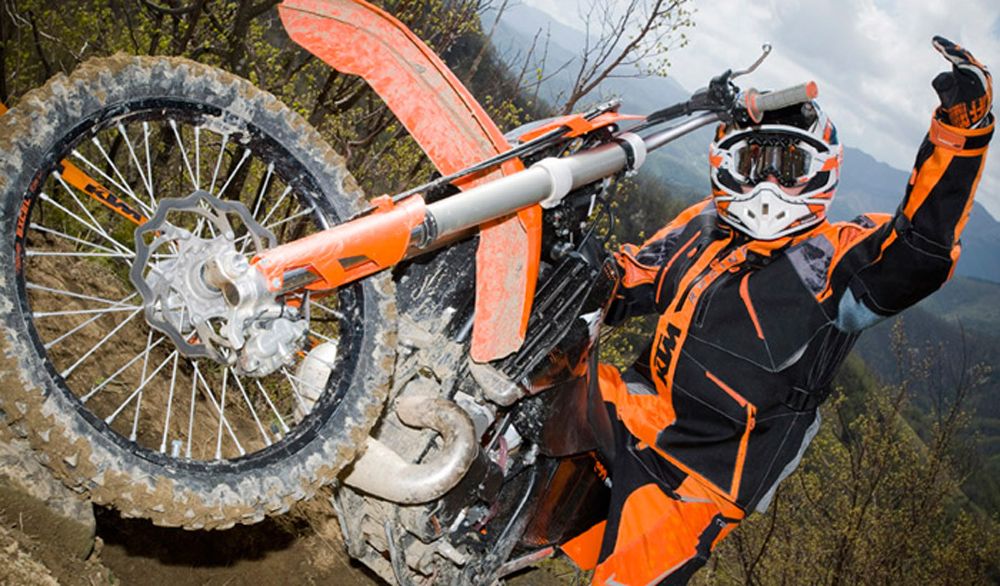
As expected, the 300 XC-W does bring more power on the scene, thanks to the 293.15 cc engine, but what surprises is the fact that it weighs 2.64 pounds less than its smaller sibling, which is quite an achievement.
Both bikes make use of the same competitive chassis featuring the double-cradle-type 25CrMo4 frame as well as the long travel WP suspensions (11.81-inch front and 13.19-inch rear) and powerful Brembo brakes that leave no room for error. The rake angle is of 63.5-degrees and the trail is adjustable, like on all other enduro KTM models.
What these two-stroke XC-Ws don’t have are skidplates, which would help a lot despite the 15.16 inches of ground clearance.
Competition
Following the same recipe, Husqvarna is also proud to keep the two-stroke frenzy alive with models such as the now revised WR 300 and WR 250, which are the appropriate ones to consider when thinking about turning to the roots of trail riding.
Exterior
All KTMs are made to stand out from the crowd and even from one another. It’s all about opening your eyes and spotting the differences. To begin with, the exhaust is a clear indicator of the type of engine that the two bikes use while the sharp, aggressive bodywork is in accordance with the claimed performance.
Virtually all body panels, fenders, mud guards and hand guards, even the number plate found on the 250/300 XC-W make the bike look like it’s moving even when it isn’t. That’s quite an achievement for two bikes that meet the requirements of workhorses.
The seat is positioned at 38.78 inches from the ground, making real mountain goats out of these enduro bikes that look rather close to veritable motocross ones. The rider will grab on Neken aluminum handlebars, rest on the narrow seat and on the mid-mount footpegs, experiencing a riding position that reminds of racing rather than relaxed trail riding. Well, sometimes that’s how things are with these KTMs.
No matter the design of a bike, the orange color scheme is what first screams out loud the Austrian manufacturer’s name. Get closer and you’ll notice great attention to details, perfectly in accordance to what European manufacturers deliver.
Both bikes ride on black Excel wheels measuring either 18-inch or 21-inch in diameter (it’s optional).
-----
Test Ride
Most riders will find it hard to choose between the 250 XC-W and the 300 XC-W and that’s why we decided to test both bikes and share the best of our impressions with you. First thing first, we’re talking about two-strokes here and these require a unique riding style. It’s all about knowing how to get the most out of that fairly small engine, shift a lot and abuse the clutch while on it too.
We must say that the smaller model proved perfectly suitable for trail riding simply because the engine is both powerful and torquey, allowing the rider to get out of most tricky situation with great ease. Revvs are always the solution because this thing works with a strong midrange and a never ending top end. Still, it remained trail-friendly and proved good to learn on as long as going easy on the throttle.
The engine works with a five-speed gearbox. This unit is very exploited on the XC-W and that’s what keeps it fast before, during and after corners. Selecting the right gear is a must and that’s why the gearbox is so precise, not allowing us to miss a gear during no riding situation and we didn’t even paid that much attention to this aspect as it all comes natural on the KTM.
Overall, the bike manages to prove a top performer not necessarily due to engine power, but mostly because of how light it feels. After getting used to the bike, handling becomes second nature and you’ll be exercising wheelies in no time.
Our pulses seriously increased once the 300 XC-W made its entry and, in the right hands, started spreading some dust too. We simply couldn’t help noticing how the slightly lighter bike works with an engine that would determine even experts on 450 cc dirt bikes to reconfigure their options. Engine response is excellent and the powerband is even livelier all across.
Although we wouldn’t recommend neither the 250 model to beginners, the 300 is a sure NO simply because it will scare them in such a way that they’ll refuse even a 125 cc four-stroke model. Yet, for trained riders it is all about the excitement of riding those trails fast and benefit of instant power at all rpm levels as long as being in the right gear.
Strangely, this one won’t feel as light as its smaller sibling, but most likely that was just me knowing that I was riding the bigger model.
KTM really made the 250/300 XC-W models angrier, but not entirely comparable to their high end four-stroke XC-W siblings as these lasts are all about linear power delivery, which isn’t quite in accordance to what the two-strokes deliver.
Price
Starting at $7,848, the 250 XC-W is one good bang for the buck. With a $7,998 MSRP, only the 300 XC-W can prove a better choice.
Conclusion
KTM really likes to make it possible for every single rider out there and this is what the two bikes that we just tested show. Both manage to remark as powerful, light and much cheaper solutions to riding those trails like the professionals do.
-----
SPECIFICATIONS
Engine and Transmission
Engine type: Single cylinder, 2-stroke
Displacement: 249 cc; 293.15 cc
Bore x stroke: 66.4/72 mm (2.61/2.83"); 72/72 mm (2.83/2.83")
Starter: Kickstarter and e-start
Transmission: 5 gears wide ratio
Carburetor: Keihin PWK 36 S AG
Control: TVC twin valve control
Lubrication: Mixture oil lubrication 1:60
Transmission oil: 15W50
Primary drive: 26:72
Final drive: 13:50
Cooling: Liquid cooled
Clutch: Wet multi-disc clutch, operated hydraulically
Ignition: Kokusan digital 2K-3; Kokusan digital E
Chassis and Dimensions
Frame: Central double-cradle-type 25CrMo4
Subframe: Aluminium 7020, removable
Handlebar: Neken Aluminium Ø 28/22 mm (1.10/0.87")
Front suspension: WP USD Ø 48 mm (1.89")
Rear suspension: WP monoshock PDS
Suspension travel front/rear: 300/335 mm (11.81/13.19")
Front brake: 260mm (10.24") disc, Brembo double piston
Rear brake: 220mm(8.66") disc, Brembo single piston
Rims, front/rear: 1.60 x 21"; 2.15 x 18"
Tires, front/rear: 80/100-21"; 110/100-18"
Chain: X-ring chain 5/8 x 1/4"
Main silencer: Aluminium 200-300 EXC
Steering head angle: 63.5°
Trail: Adjustable
Wheel base: 1475±10 mm (58.07±0.39")
Ground clearance (unloaded): 385 mm (15.16")
Seat height: 985 mm (38.78")
Tank capacity: approx. 11 liters (2.9 gal)
Weight (no fuel): approx. 101.6 kg (223.98 lbs); 100.4 kg (221.34 lbs)

